Text








YOUR GRIM SMILE
Why had I come all the way from Germany to London? Why had I chosen a place built on purposefulness for my aimless wandering? I was in love at first. But we soon grew apart. Now I could see: the dulled out eyes, almost cataract-grey, only perceiving broad silhouettes. I had given up, minding my own business. There was no way to see behind those eyes anymore. Or was I losing my vision, too?
London, 2018
Pentax K1000
SMC Pentax-M, 50mm, f2
#flaneur#streetphotography#travel#london#analogphotography#analog#black and white#bw#filmisnotdead#film photography#film#pentax k1000
6 notes
·
View notes
Text








THE LIGHTNESS OF DAY
Some days are so light,
you can feel them
filling you with ease,
like a touch of light.
Istanbul, 2017
Pentax K1000
SMC Pentax-M, 50mm, f2
#flaneur#streetphotography#travel#analog#istanbul#art#analogphotography#film#film photography#filmisnotdead#pentax k1000
2 notes
·
View notes
Photo



Cinema without people: Toni Erdmann (2016, Maren Ade, dir.)
160 notes
·
View notes
Photo

The Abbey in the Oakwood, 1810, Caspar David Friedrich
Medium: oil
https://www.wikiart.org/en/caspar-david-friedrich/the-abbey-in-the-oakwood-1810-0
38 notes
·
View notes
Photo
Looking too closely.









Look through any wndow, Letícia Lampert
423 notes
·
View notes
Text
FRAGMENTS OF A STREET: Mitropoleos, Thessaloniki

The street Mitropoleos is situated in the second row to the sea. Walking one street in Thessaloniki (most of them run parallel to the sea) is like following one line of thought, one argument. Mitropoleos is just in between two of the arterial roads of the city, Leoforos Nikis and Tsimiski. Now, still following that logic, those two arguments are drawn rather ostentatiously. The former, eased by the sea’s breeze, with its cafés and bars carelessly looking out into the pretty sight that is the Mediterranean Sea. The latter, flooding countless cars from one side of the city to the other, and countless consumers from one franchise store to the next. However, walking on Mitropoleos is like reading between those broad lines of the argument that describe the city. And isn’t it here, between the lines, where true character is to be found?

If you walk here and you get the timing just right, you might find an unexpected companion: the municipal garbage disposal. Its route leads all the way over Mitropoleos, and while I’m wandering the street contemplatively, next to me, the bin men rummage their way through the waste of this street. In this city, even a dirty business like this one shouldn’t be seen as merely the civilised fulfilment of a functional purpose. No, in Thessaloniki the bin men are aestheticised into litter whisperers: “Many stories, one heart”, claims the logo on the tarnished lorry. Between the rubbish they hear the city’s truth voicing itself. And I listened: Strolling on, following their lead through the unsorted waste.

You know that cliché of the old mediterranean men sitting on benches letting life pass in front of them? It’s true, on Mitropoleos, for example. One of them might be talking of the time when they were classmates and they stole the candy from their teacher, the other one might be bragging about the time when he was a captain and he had a mistress in each port, and the last one might not even pay attention because he’s bored of the same old stories. Whatever they might be doing on this bench, the city gives them a space to do so. In Thessaloniki, you’ll always find the time and space to stop and take a break from the directedness of our everyday lives. You step aside, you sit down, stagnating. Most of the times, then you get up and you still have no idea, as it probably is the case with those three philosophers. But sometimes, out of this purposeless daydreaming, you get up and you’ve understood it all. There is another old Greek man who liked to sit down and contemplate, and they even honoured him with a symbolic statue, caught in the act, sitting, of course, here on Aristotle Square.
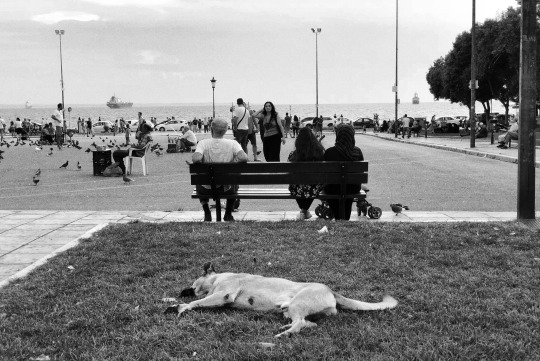
The stray dogs, on the contrary, don’t need these readymade spaces to do whatever they’re doing. One reason might be that, unlike those old gentlemen and their philosophical soulmate dogs are just not the types for contemplating around very much, I guess. Especially, on Mitropoleos you should keep your eyes open. Because you might trip over a stray dog who has spontaneously decided to take a nap right in the middle of a pedestrian street. They only give a shit about the artificial rationalisation of public space, when they actually take a shit. That makes their life a whole lot easier. Take this dog for example. He’s just lying around aimlessly, relieving himself from all the intentionality of his daily dog life, consuming his present to the ultimate. Maybe he’s the Flaneur in his most primitive form. Having to wander around, sometimes confused, sometimes enlightened from what I perceive underway, always in between me and the other, I admire him for his strict absolutism. But that he will never know.
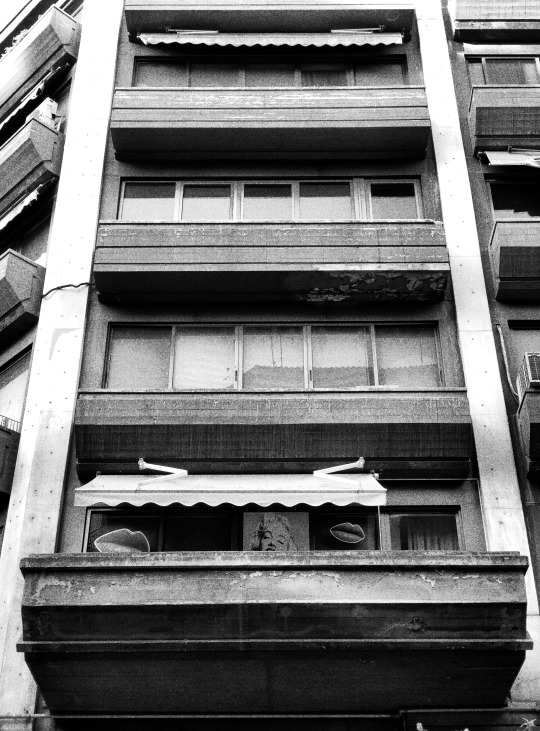
Walking on, I spot a mythological goddess living on the first floor of brutalist apartment block: Marilyn Monroe is alive and she lives on Mitropoleos! Greek Marilyn might also seem like an exploited, even further extrapolated caricature of its original idea, torn into pieces in this brutal process of cultural predation. But something seems different about the way Greeks turn such real-life figures into larger-than-life icons. Maybe it’s their historical and philosophical entrenchment in ancient myths, a mytho-logic, that explains reality on the grounds of transcendent idols. They don’t allow their idols to be corrupted by the cynicism of self-awareness and self-criticism, those deadly interpretative means that killed American Marilyn. Instead, they look for the purity in her, and they extract those pure ideals that need to be worshipped and kept alive. Maybe, that is why, in the end, Greek Marilyn survives. What stays from her, here on Mitropoleos, shielded from the burning sun, is simply the beauty of her white face and the sensuality of her larger-than-life red lips.

Thessaloniki really is obsessed with beauty. And one way to pronounce that, Thessalonikians know very well, is with fashion. Unlike on the high street, Tsimiski, you won’t find the usual suspects on Mitropoleos when it comes to fashion. The stores here usually know what they’re doing, being specialised on a certain kind of wear or a certain target group. And it is this boutique culture that is representative for the stylistic attitude of the whole city. But just like Mitropoleos itself, fashionability between genders seems to be a one-way street. In comparison to the finesse of the female fashion, it is clearly visible that the male sections are on the last level of every store here. Still, everybody pays a great deal of attention to looks: Men on the women’s and women on their own. Even the mannequins in the windows can’t help but being real Thessalonikian women – offering their naked necks to be bitten by the beautiful devil of pleasure.
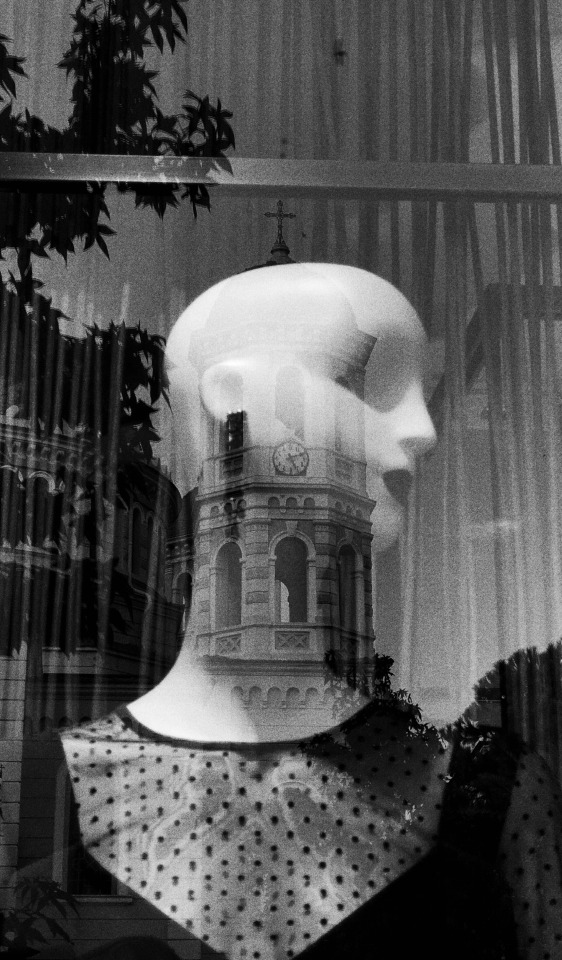
But there’s a limit to this diabolic seduction. The orthodox church, until today, has a firm grip on Greek society. You don’t always see it in them at first sight, especially in Thessaloniki, where cafés, bars, clubs and music halls constantly tempt you to dare a sexy fling with the devil. But if you look closely, it’s there, somewhere in the back of their minds. Even if people lustfully immerse themselves in mundane and secularised pleasures, the sinful conscience is always there. Their cultural décolleté certainly is inviting and pleasant to look at, but it’s covered with the seemingly pious transparent of decency. Maybe that’s what makes Thessaloniki so sexy.

That’s what I was talking about. Look at those men, for instance, sitting in a row, like the judges of the popular Greek TV show Greece’s Next Top Model, waiting for the next candidate to present her beauty on the catwalk in front of them. But this is a less sexist establishment than it seems. Everybody coming here knows they have just entered the stage, and this goes for all genders. Especially here, in the picturesque area by the port it’s all about seeing and being seen. The young and beautiful come to cafés like Appallou to meet their friends for a traditional freddo cappuccino, to talk about nothing or everything. And by selecting places like this one to update each other on the newest gossip, you multiply your exposure many times over. It’s almost like Instagram in real life: Use the right hashtag and location – and you become more likeable.

The walk along Mitropoleos concludes on the other end of the city center, with a truly iconic Thessalonikian view. It’s the White Tower, a former fortification against foreign invaders. Today the White Tower works quite the opposite way: Invading tourists are welcomed into the museum that is now inside the White Tower. For the Thessalonians themselves the White Tower is not particularly an object of such interest. The connection to it is more emotional, for historic reasons perhaps: It acquired its name in 1912, when Thessaloniki was finally annexed from the Ottoman Empire. And as a symbol of this purification, they whitewashed the facade. If you ask me, they just did it because it makes for a better view in the background, while you’re slurping your iced coffee with pleasure, here, in the soft sun on Mitropoleos.
3 notes
·
View notes
Text
0 notes
Photo

The wisdom of the clown. From LA SOLITUDE DE CHANTEUR DE FOND (1974) by Chris Marker.
0 notes
Photo

THE LIGHTNESS OF DAY | ISTANBUL, 2017
Some days are so light, you can feel them filling you with ease as if you can touch the light.
#istanbul#turkey#travel#flaneur#streetphotography#sky#sun#pentax#pentax k1000#analogphotography#analog
3 notes
·
View notes
Photo

enlightened.
#streetphotography#analog#city#sunlight#film#istanbul#travel#turkey#backpacking#analogphotography#sun#wanderlust#flaneur
3 notes
·
View notes
Photo

the place before the sea.
0 notes
Photo

a stray cat.
1 note
·
View note
Text
Days of Future Passed – James Sykes












The photographs shown here were made over the last year as part of a series called “Days of Future Passed”, that includes a number of different projects within it. The Privatisation of Public Space explores our relationship with pseudo-public spaces and The Possibility of Movement examines mental health issues within the contemporary urban landscape (for more information please see my website below).
I’ve been taking photographs for as long as I can remember and “the city” has been the subject I have obsessively photographed throughout that time. The subject and the medium have an incredibly powerful relationship for me. My practice is documentary in nature (based in my training at the acclaimed Newport School) and explores the themes of topography, autobiography and metaphor. Throughout my practice I am attempting to catalogue archetypal urban scenes and develop a narrative that speaks of the humans within them and my experience of living in the huge metropolis of London.
You can find more of James Sykes on his Instagram or website.
15 notes
·
View notes
Photo
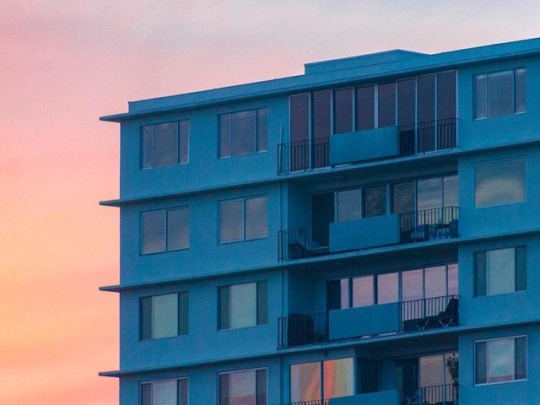

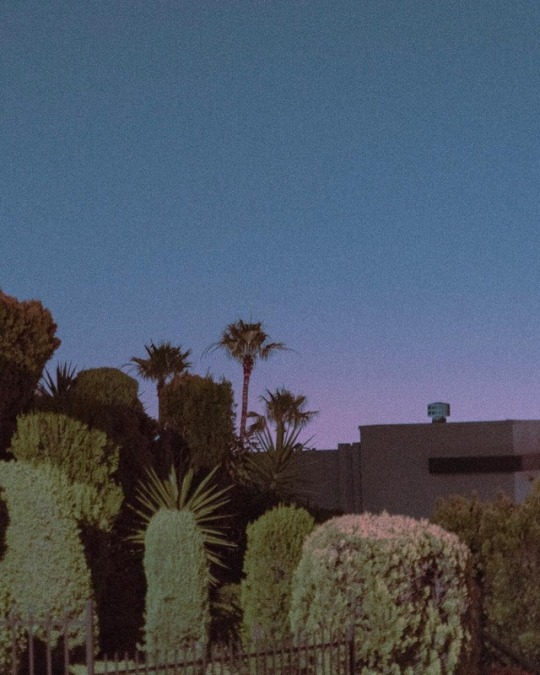
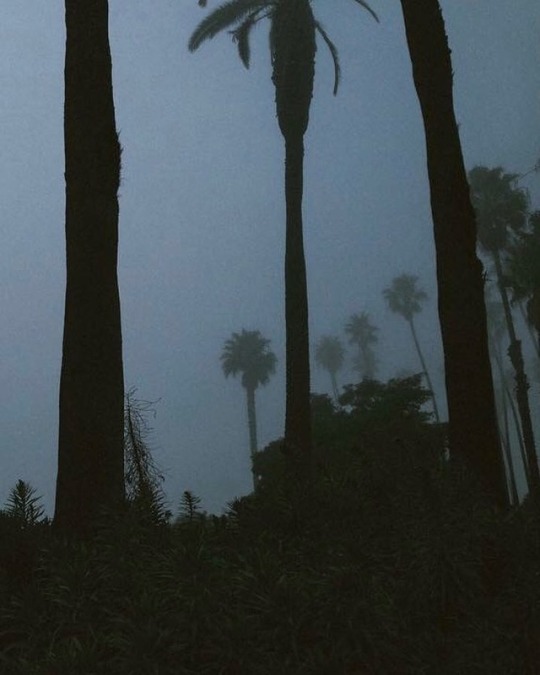
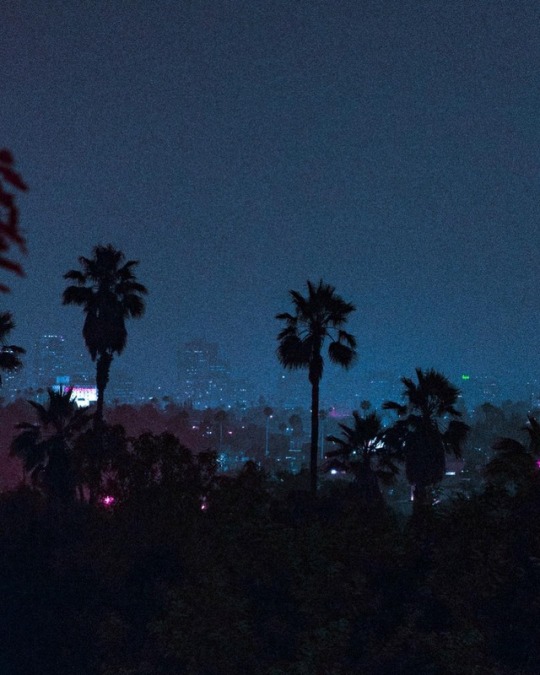


The morning after the night before, Neil Kryszak
2K notes
·
View notes



